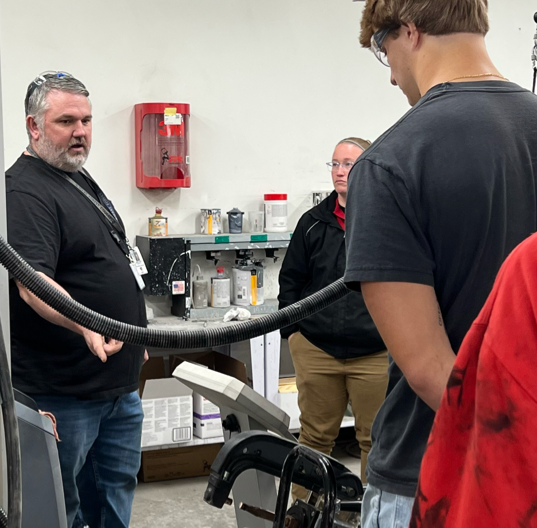E-cigs pose a threat to students
March 3, 2015
As electric cigarettes gain in popularity, they become more of a detrimental threat to students.
Vaping is proclaimed to pollute lungs with toxic chemicals, such as carcinogens, and may even make antibiotic-resistant bacteria harder to kill. E-cigs do not only carry health risks, but usage in Wake County schools results in disciplinary action.
The Wake County School Board’s policy for student conduct states, “No student shall possess, display, or use any tobacco product. This restriction applies even when the student is on school system property or at any school-sponsored activity as a visitor or spectator.”
A tobacco product is considered a cigarette, e-cigarette, cigar, pipe, chewing tobacco or snuff, according to WCPSS.
If a student is found to be in possession of any of these items on a school campus, he or she will receive in-school suspension or a possible short-term suspension, not exceeding two days.
Many students are not aware of these consequences.
“I was not aware of the punishment beforehand at all. I think that if you are allowed to legally buy and own an e-cig, you should be allowed to have them at school,” senior Jamal Sweet said.
Young adults often begin smoking e-cigs for entertainment and fun. They do not smoke them in order to quit smoking cigarettes.
The Monitoring the Future survey released in 2014, documented that more students reported using an e-cigarette in the past month than those that admitted to using traditional cigarettes.
“More than 17.1 percent of high school seniors said they used an e-cigarette in the past month, while just 13.6 percent said they used a traditional cigarette in the previous 30 days,” the survey said.
As these statistics about youth smoking accumulate, the negative effects of e-cigs are becoming exposed as well.
“E-cigarettes are not regulated or approved by the Food and Drug Administration (FDA). This means that the amount of nicotine and other harmful ingredients in each cartridge is not always the same. One electronic cigarette can have as much nicotine as a whole pack of cigarettes,” Dr. Jennifer Hughes of Capital Pediatrics and Adolescent Center said.
According to Web MD, nicotine can pose a threat to teen bodies and cause a never-ending cycle of withdrawal. When users try to stop, they can begin feeling irritable, depressed, restless and anxious, not to mention other effects.
“The FDA has found cancer-causing chemicals in e-cigs. Some of the chemicals found were tobacco-specific nitrosamines, carbonyl compounds, metals, volatile organic compounds and phenolic compounds,” Hughes said.
Doctors do not consider e-cigarettes to be a trustworthy product. Electronic cigarette companies use a variety of flavors to attract today’s youth. Their advertisements may cloud adolescent judgment.
“According to a study in Pediatrics July 2014, advertising for e-cigarettes has increased dramatically in the U.S. in the past several years, especially during programs most likely to be watched by adolescents and young adults, a 256 percent increase in advertisements 2011 to 2013 during programs watched by ages 12-17,” Hughes said.
Doctors are concerned that manufacturers with huge advertising budgets and celebrity endorsements could make smoking popular again.
E-cigarettes are pictured as a “safer” alternative to smoking and a way to quit smoking cigarettes. Doctors worry the façade these companies have built could roll back decades of progress in getting people to quit or never begin this unhealthy addiction.
“Additional research is needed to determine whether e-cigarettes even promote cessation and help smokers quit, or whether they promote experimentation, initiation or dual use of tobacco products and perpetuate addiction to nicotine,” Hughes said, “ I beg to argue that for youth today, this is certainly not a “safer” option compared to refraining from using tobacco products all together.”










